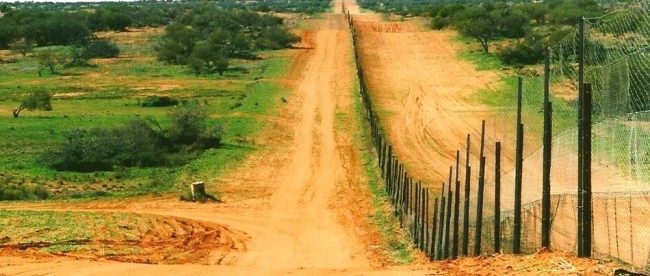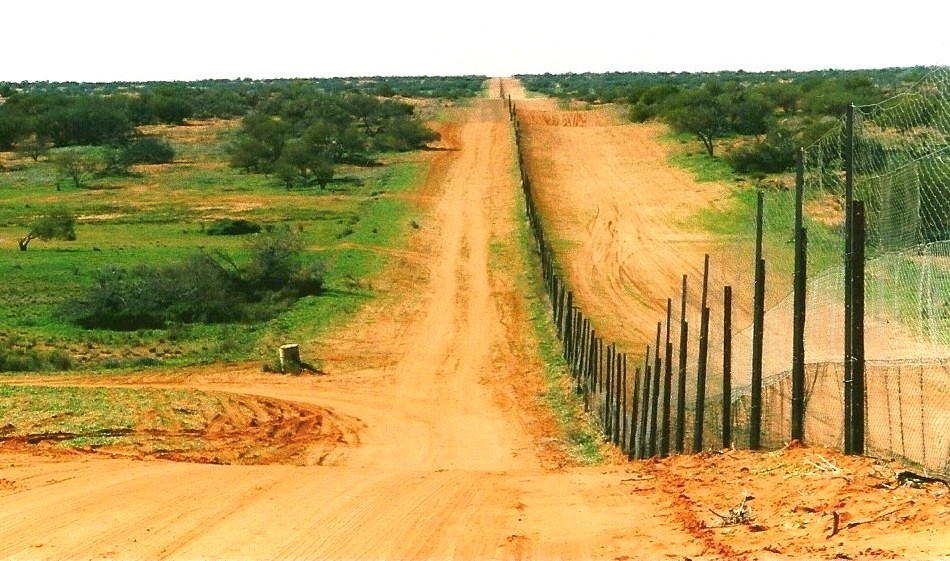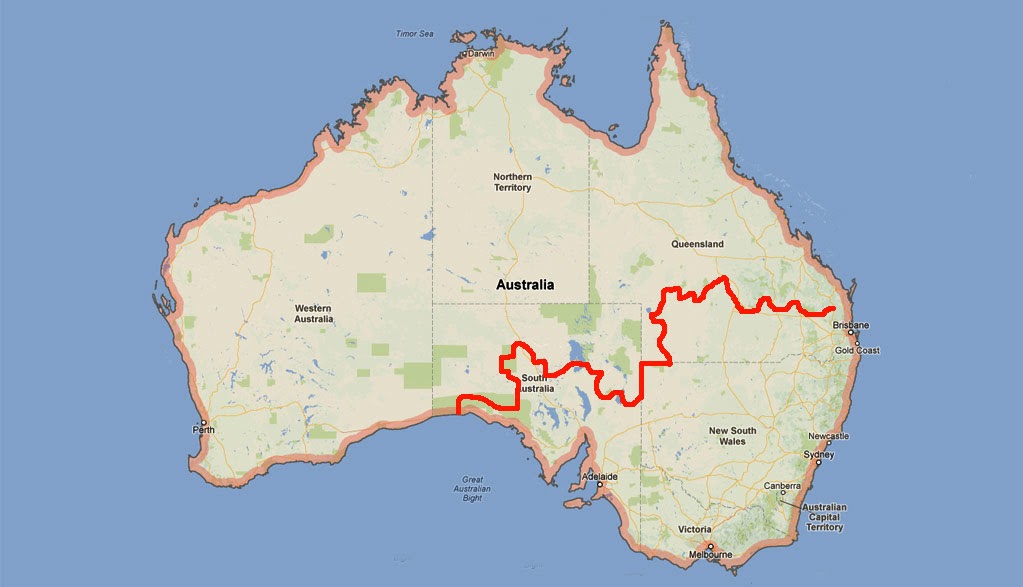Who Kept the Dogs Out


Imagine, for sake of discussion about something totally unrelated, a fence which stretched, end to end, across the U.S./Canadian border. (Let’s ignore the existence of Alaska, for these purposes.) That fence would stretch a ridiculous 3,983 miles (6,416 km) in length and run through the Great Lakes, which is to say that it would be incredibly impractical. It would also be a world record for the longest fence in the world — but not by much.
That’s because they’re a similarly long fence already in existence in Australia. Coming in at 3,488 miles (5,614 km), their record-setting structure zig-zags through the southeast of the nation, nearly cutting off some of the most populous areas of the nation from the wilderness of the center. Here’s a map:

Why such a long fence? To keep the dingoes out.
Dingoes, made famous globally by a media controversy and an actual tragedy, are a feral dog native to Australia. And they eat sheep, which are vital to Australia’s economy. As livestock farming grew in the 1800s, dingo attacks were increasingly a problem. To address that issue, ranchers instituted a two-pronged approach, per the New York Times. First, they patrolled their area, typically armed with a rifle while riding camelback, taking aim at any dingoes in the area. And concurrently, in an effort to limit the amount of area they had to patrol, the ranchers erected dog fences, keeping their sheep in and the dingoes out. The solution mostly worked, too — the dingo population fell dramatically.
The solution, though, required a large investment from ranchers — maintaining their fences and patrolling the areas — and was an overall drag on the livestock industry as a result, as ranchers were duplicating efforts and, even worse, simply pushing the problem toward other nearby ranchers. The government stepped in, taking over the responsibilities. Instead of having to account for dozens if not hundreds of dingo fences pockmarking the landscape, authorities decided to simply create one really, really, really long fence that the state would administer.
The fence, which has a gap at the eastern shore (as dingoes don’t seem to migrate via there), was completed in 1885 and has been maintained by the Australian government since. Today, it costs about $1 million USD ($1.3 million AUD) each year to upkeep, with a percentage of that money going toward 23 employees who assume responsibility for the fence. Among those 23 people are two-person repair crews; each pair monitors a 185 mile (300 km) section of fence, checking the entire length of their section over the course of a week, per Wikipedia. And by and large, the fence works. The lamb industry in Australia constitutes roughly 5% of the country’s entire agricultural sector, and almost all of that economic activity is dingo-free because of the fence.
But keeping the dogs out may not be a net positive. Dingoes don’t just eat sheep — they also eat kangaroo. And the kangaroo population within the fenced-protected area is much, much higher than on the dingo-friendly side. Kangaroo eat all sorts of vegetation and, according to a 2017 study, their grazing has therefore gone unchecked, leading to a higher-than-expected loss in vegetation. That, in turn, caused a problem for the area’s farmland. As Smithsonian explains, “researchers found lower levels of phosphorus, nitrogen, and carbon in the soil where kangaroos roamed in great numbers compared to areas where dingoes were common.” So it’s possible that the ranchers’ win has become the farmers’ loss, and that’s just the tip of its ecological impact.
While there are already conversations about removing the fence, the century-old structure is likely to stay for the foreseeable future.
Bonus fact: Without dingoes around, kangaroos can be a menace to farmers, as explained above. So it’s not uncommon for farmers to shoot at trespassing kangaroos. To prevent this, researchers are looking into a creative — and kind of gross — solution. Kangaroos avoid dingoes because the dingoes will eat them, Michael Parsons is hoping to take advantage of that fact. Parsons, a biologist at Murdoch University, Western Australia, tested to see if dingo urine could keep the kangaroos away. And per Australian Geographic, his tests thus far look promising — the dingo pee was such an effective repellent that “the initially long-term trial was cut short when the animals stopped showing up for the experiment.” (Spraying dog pee isn’t a great idea for other reasons, though; Parsons is hoping to make the case for investment in developing a synthetic version of dingo urine, as it’d be easier to acquire and safer to use.)
From the Archives: Down the Rabbit Hole: Australia’s rabbit problem.
